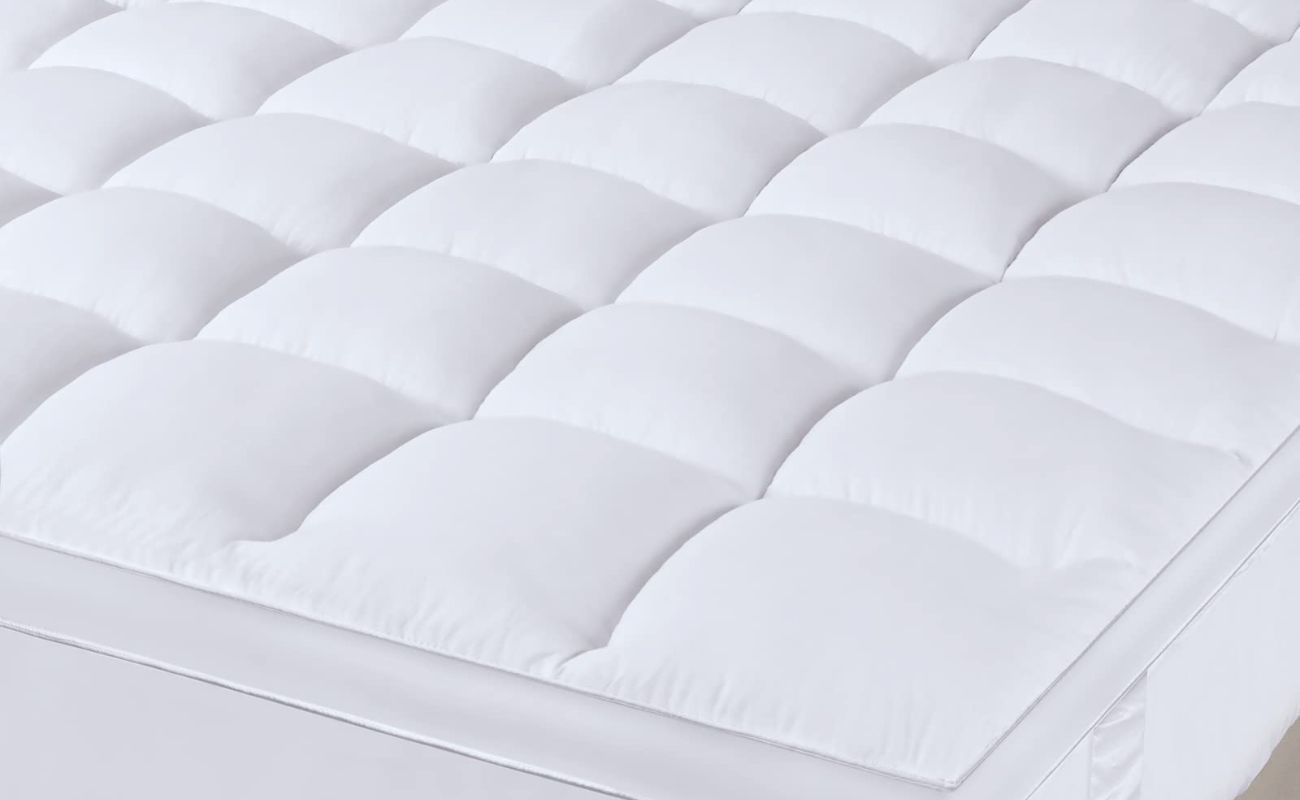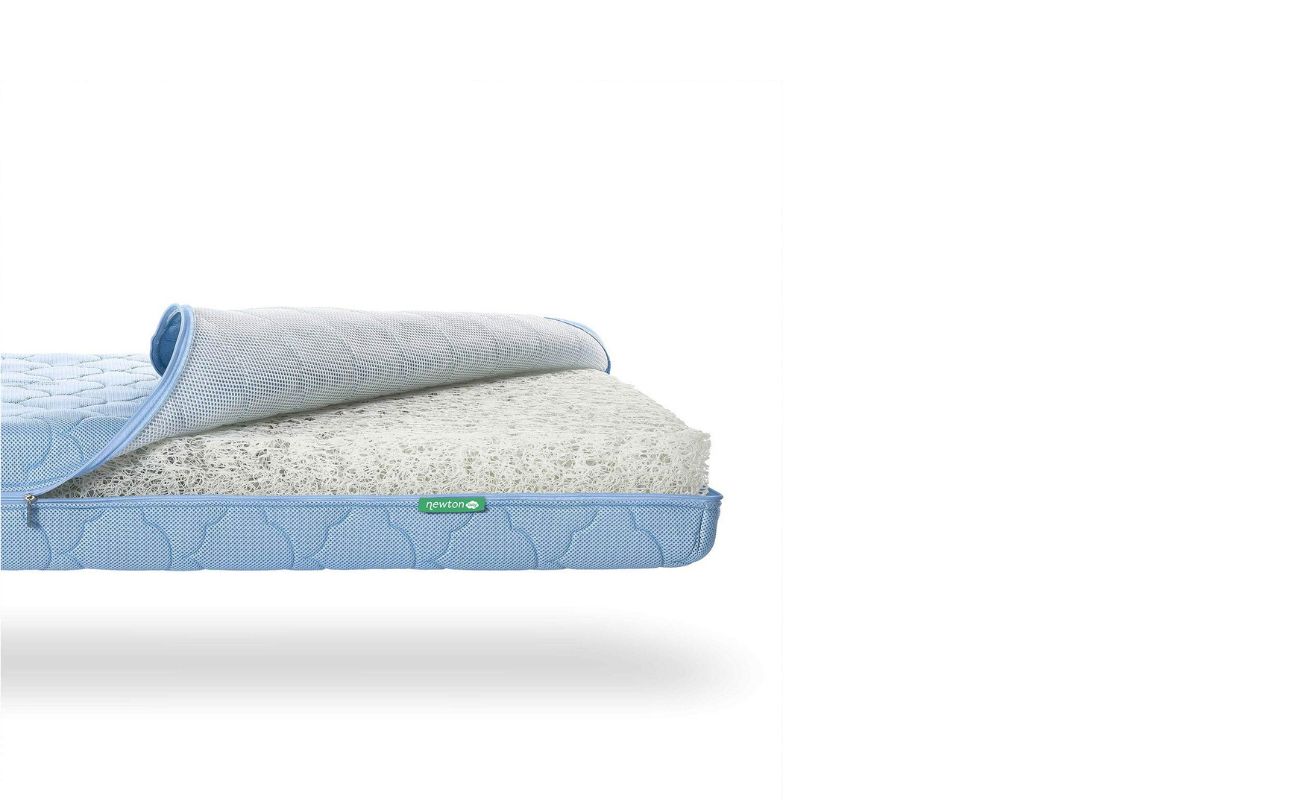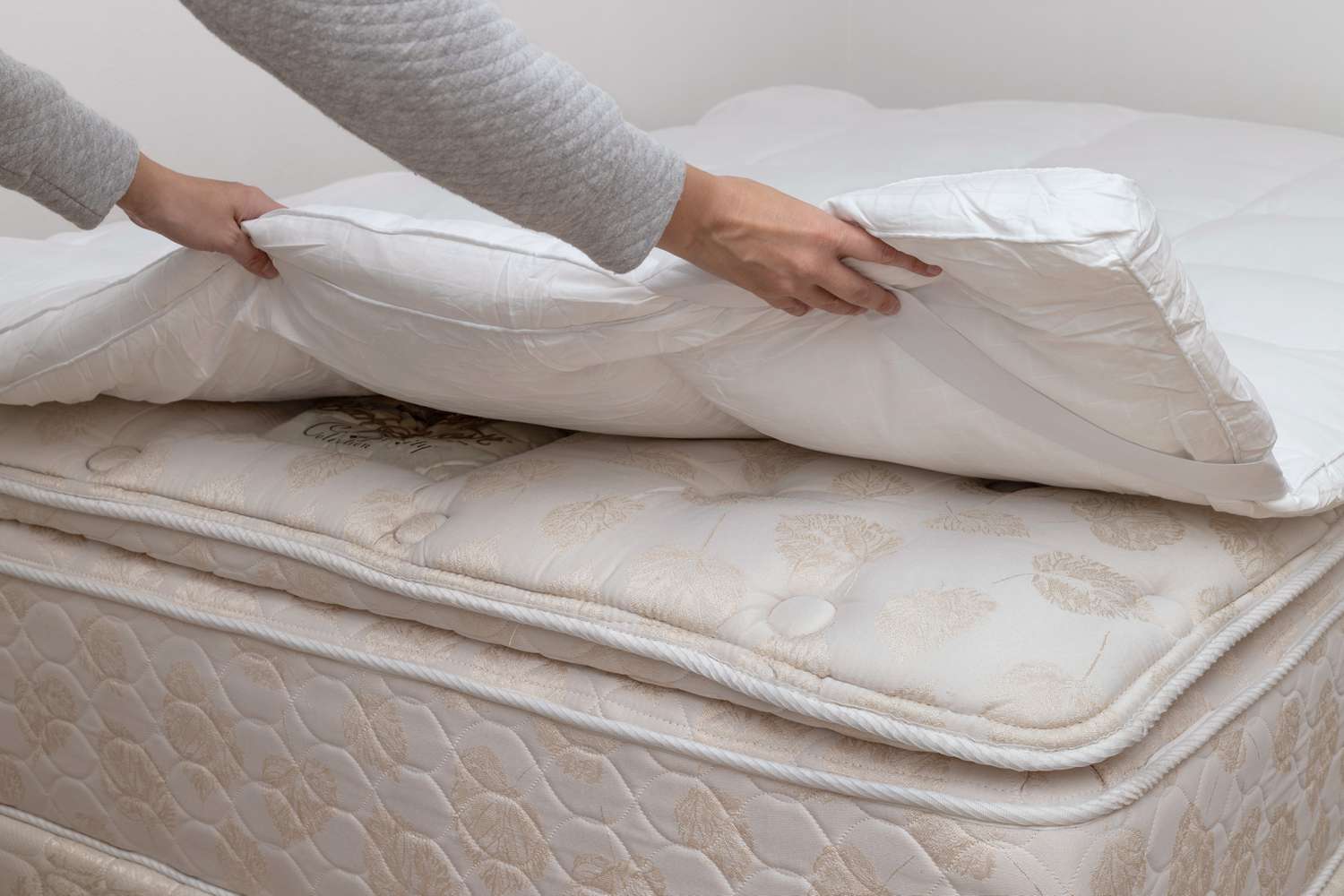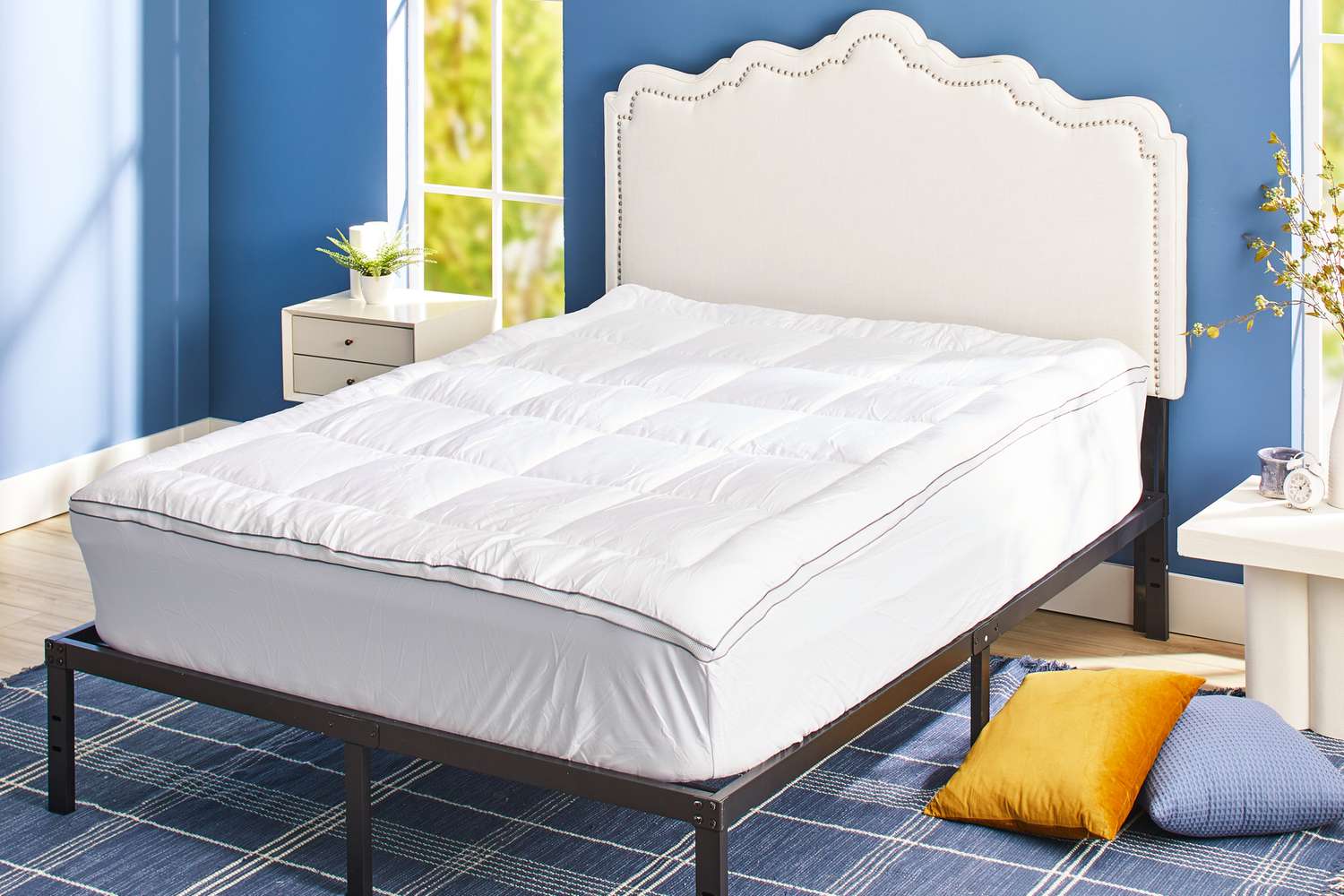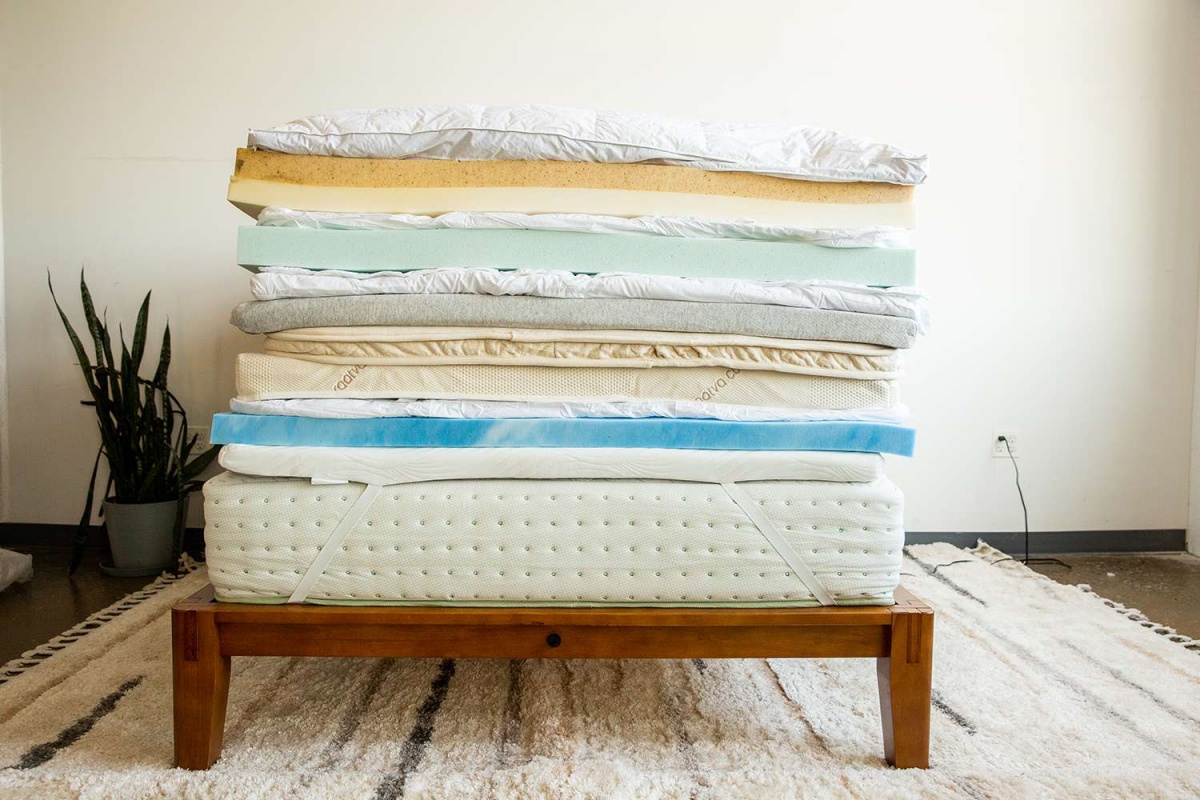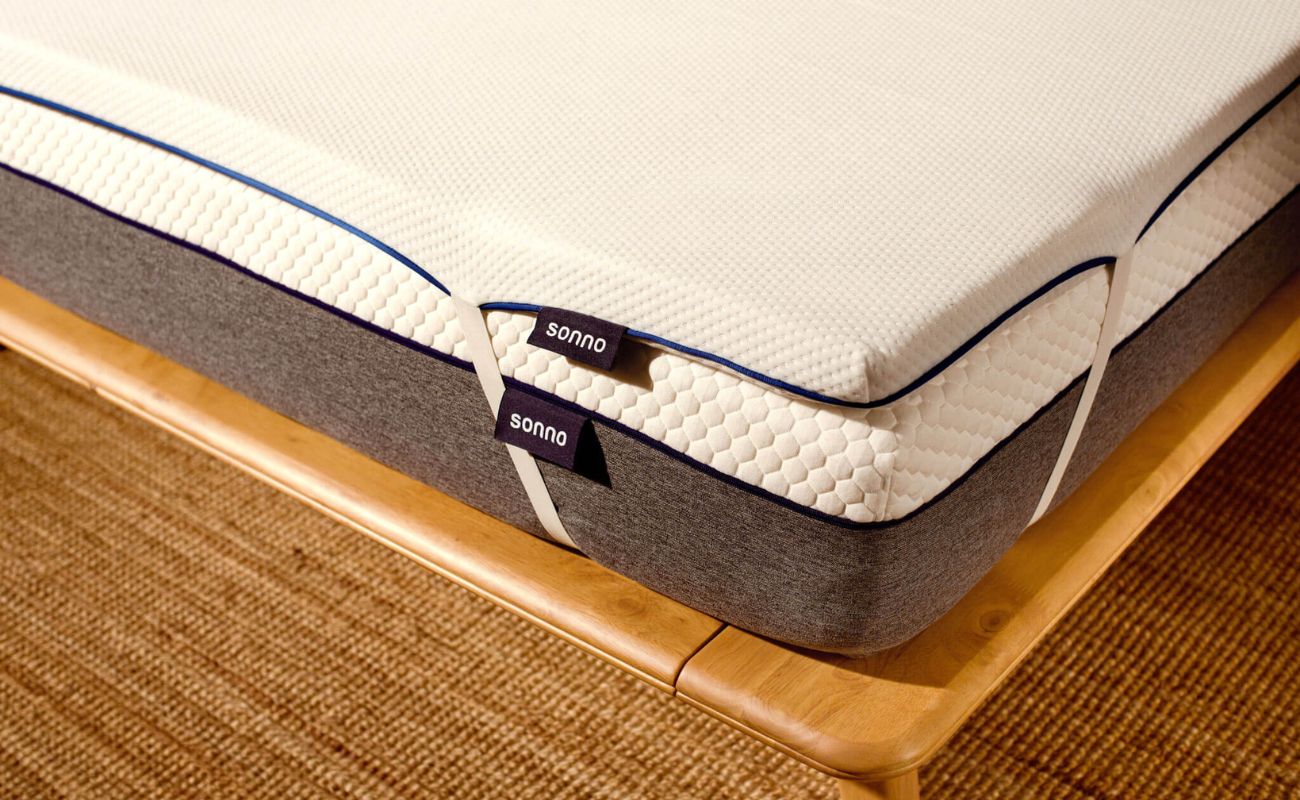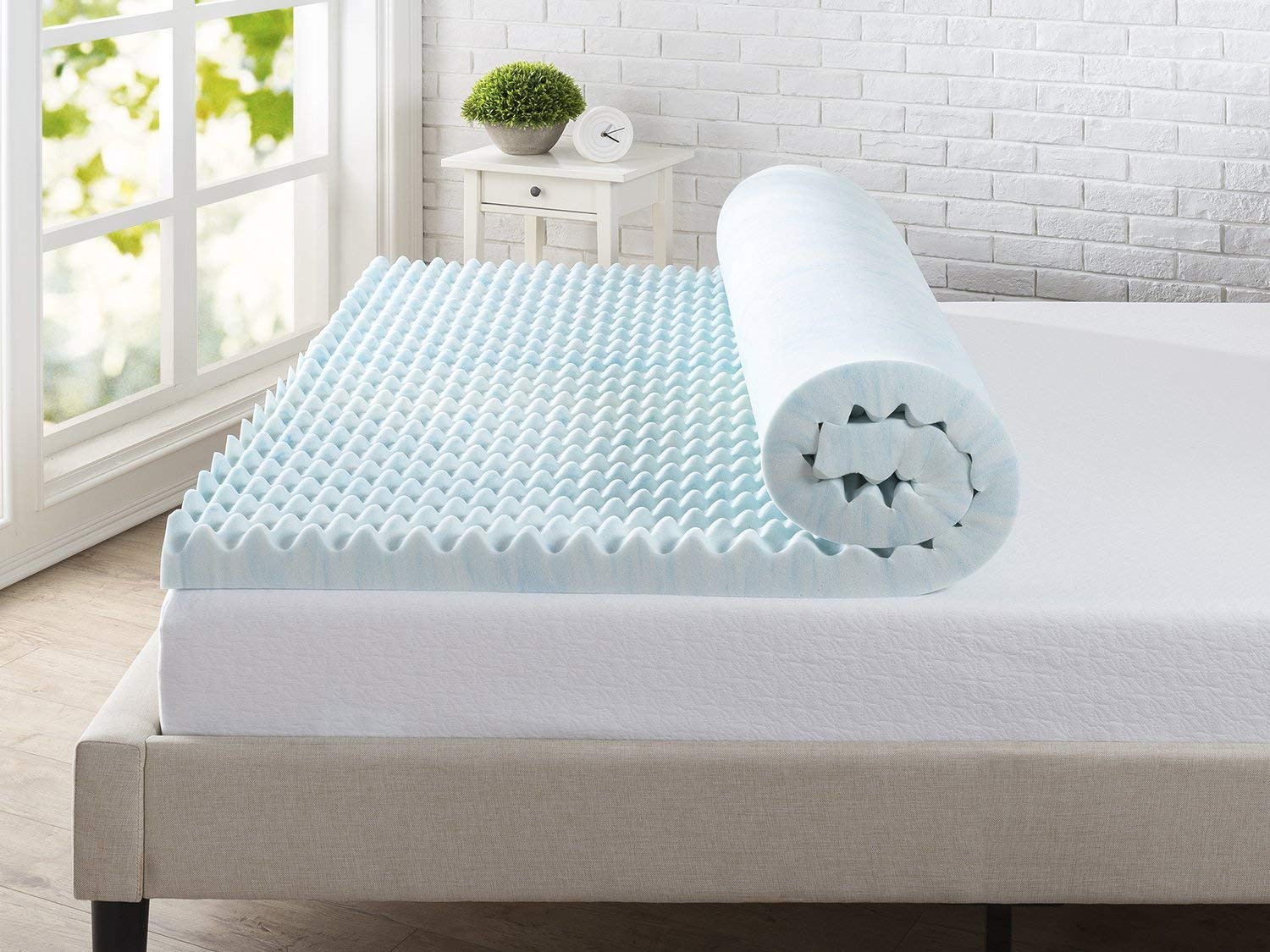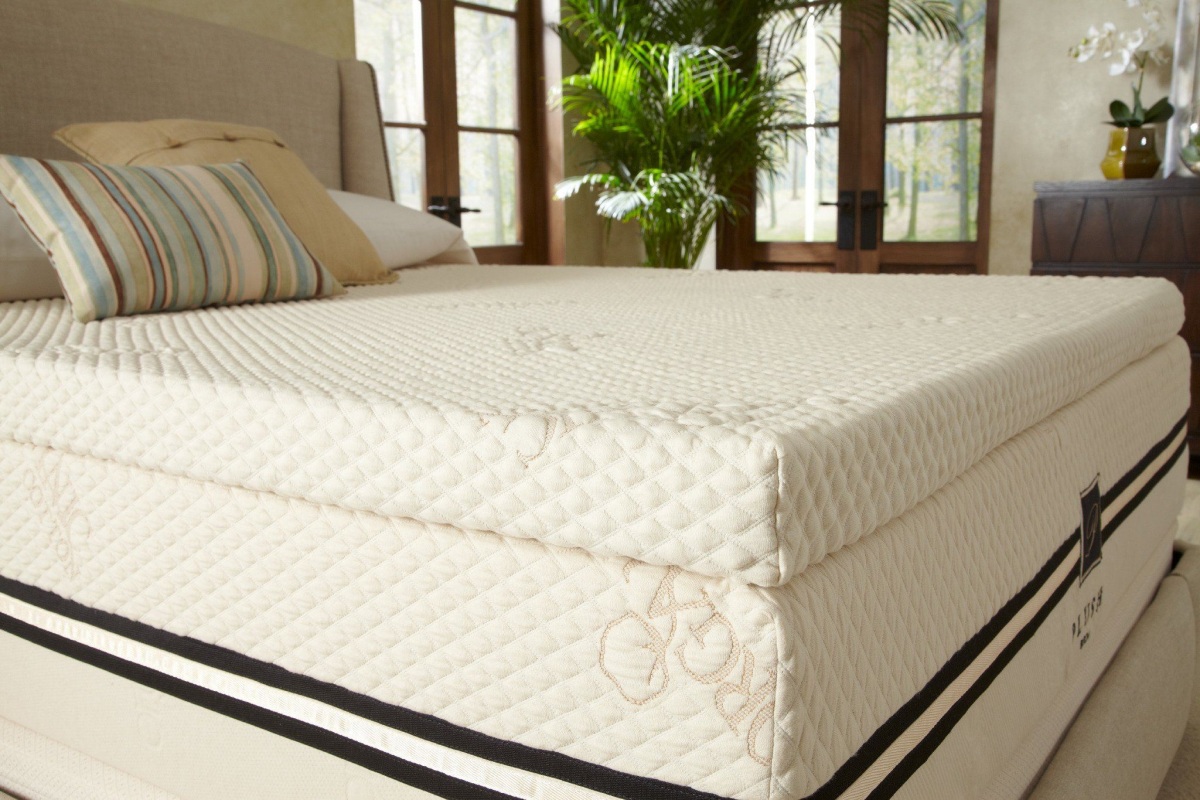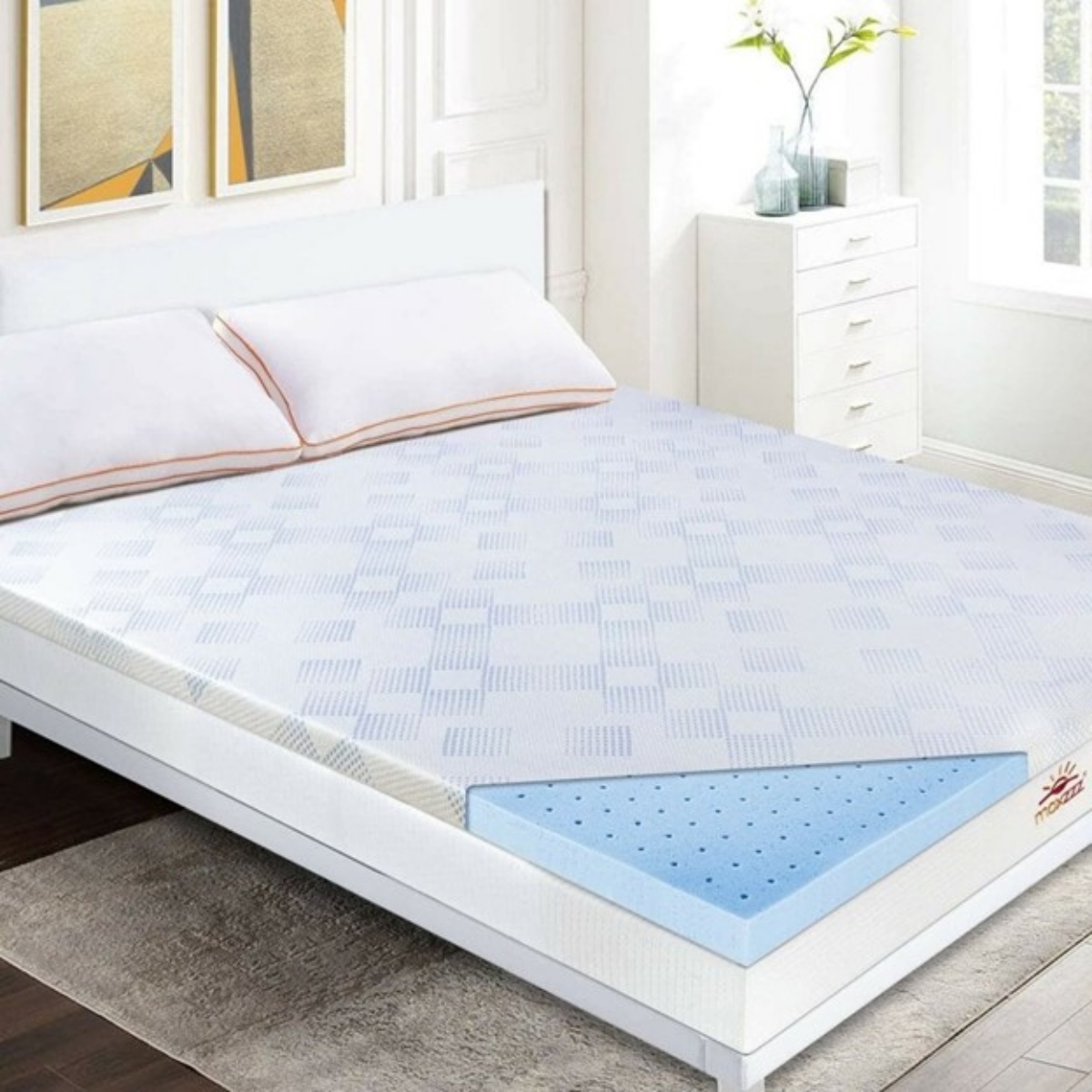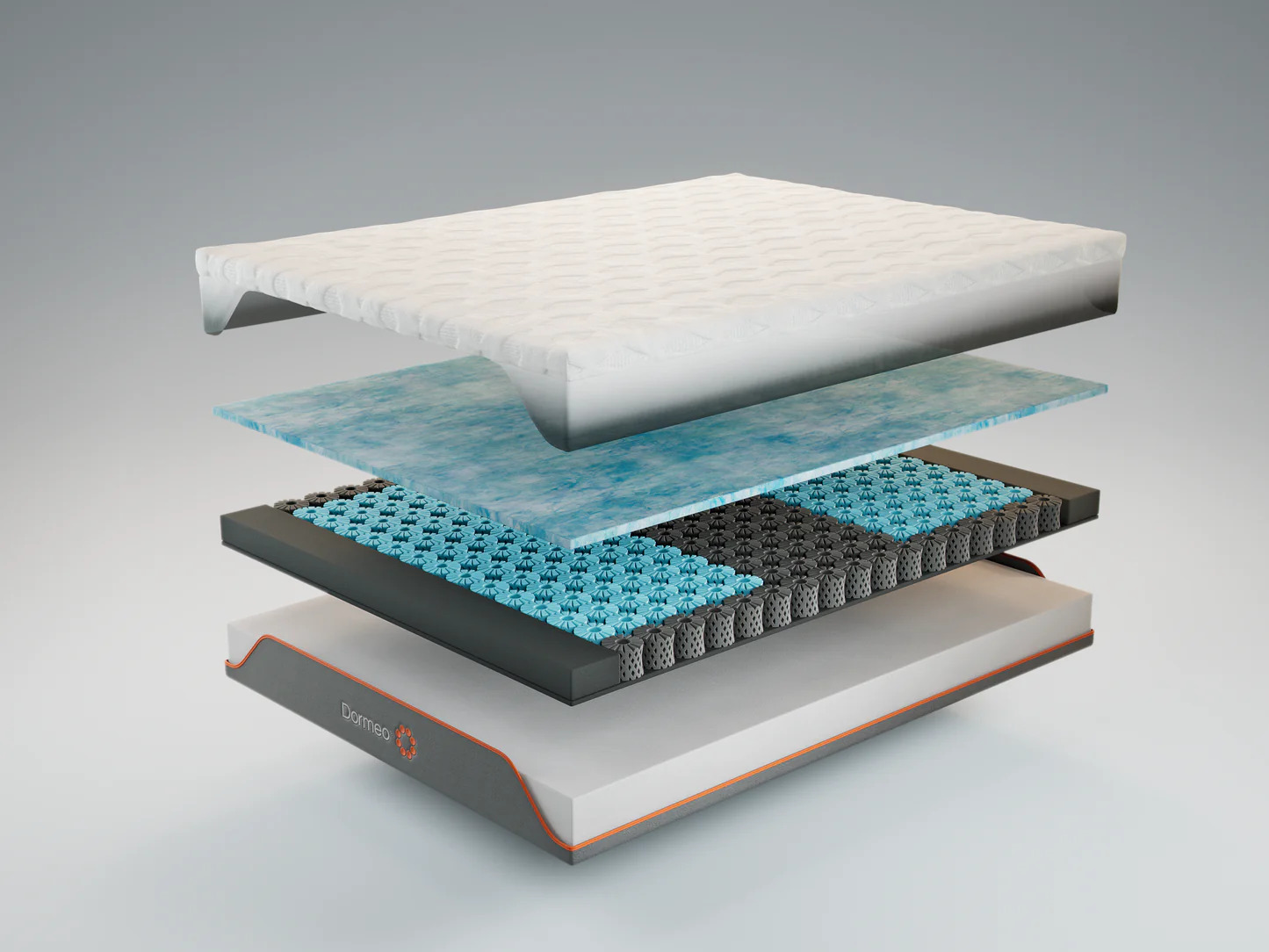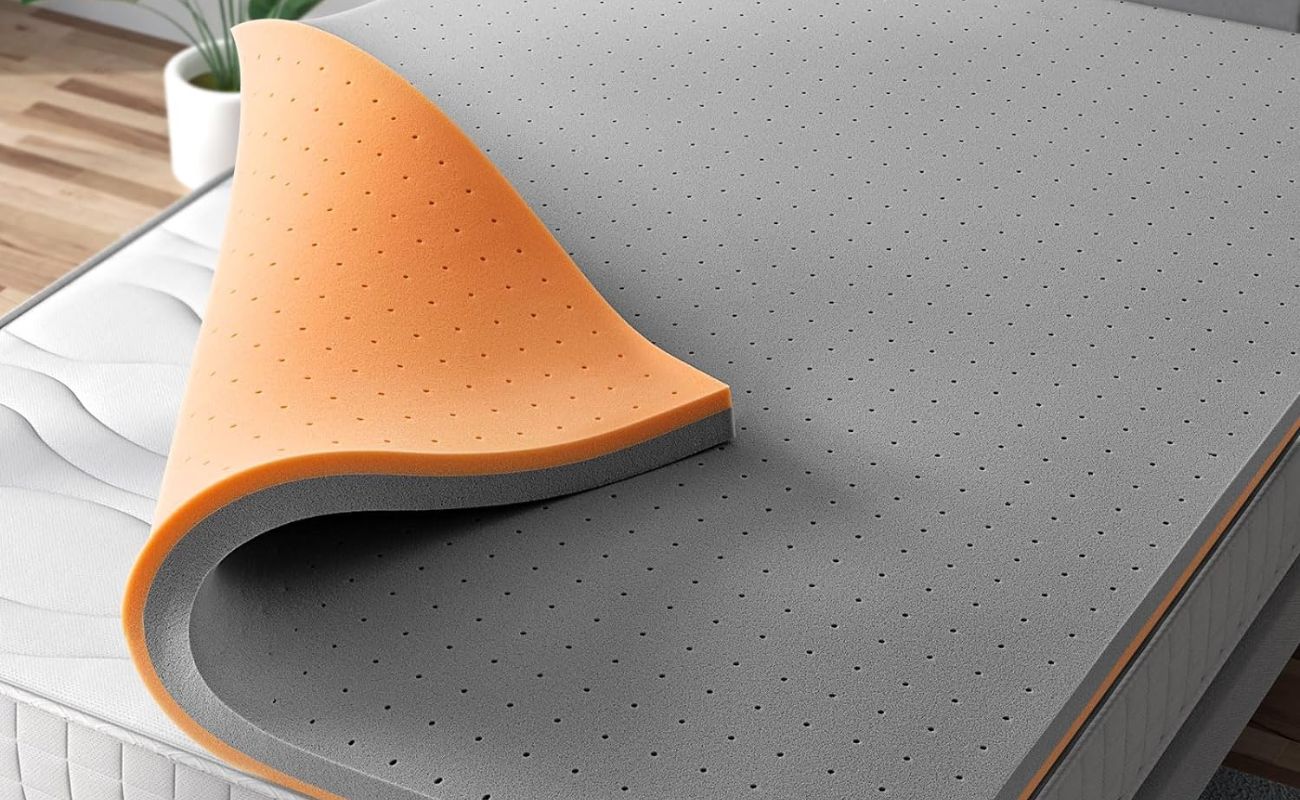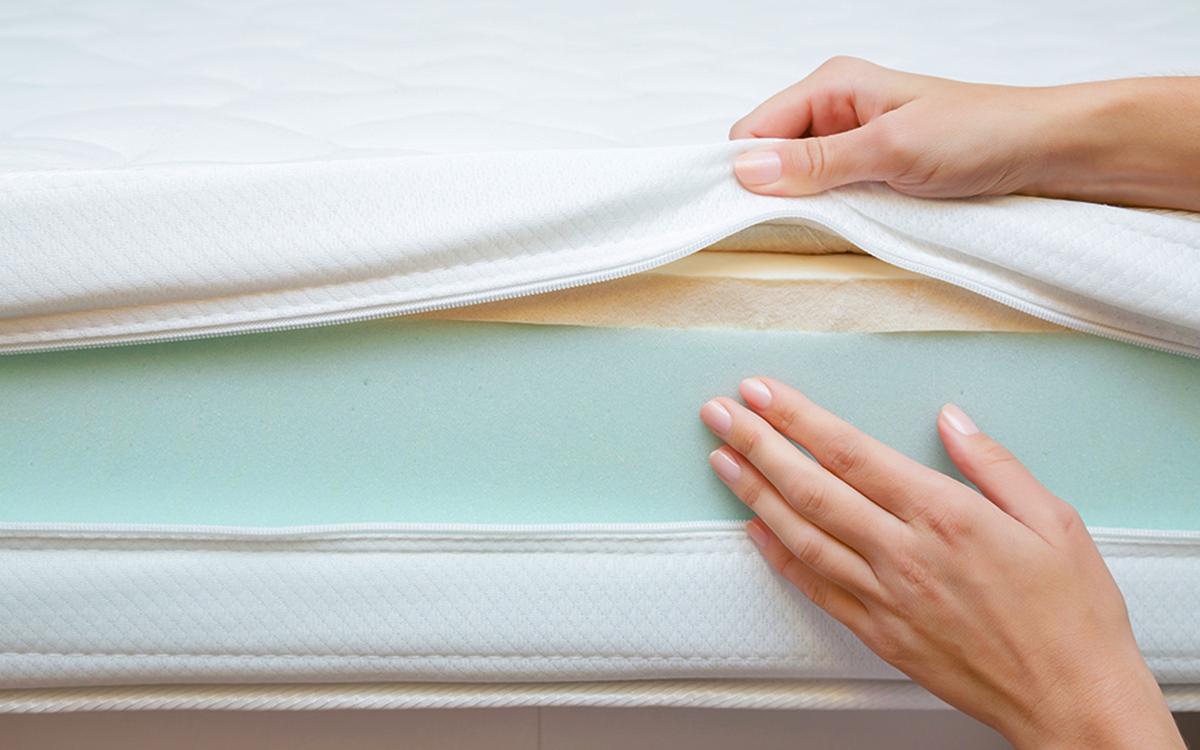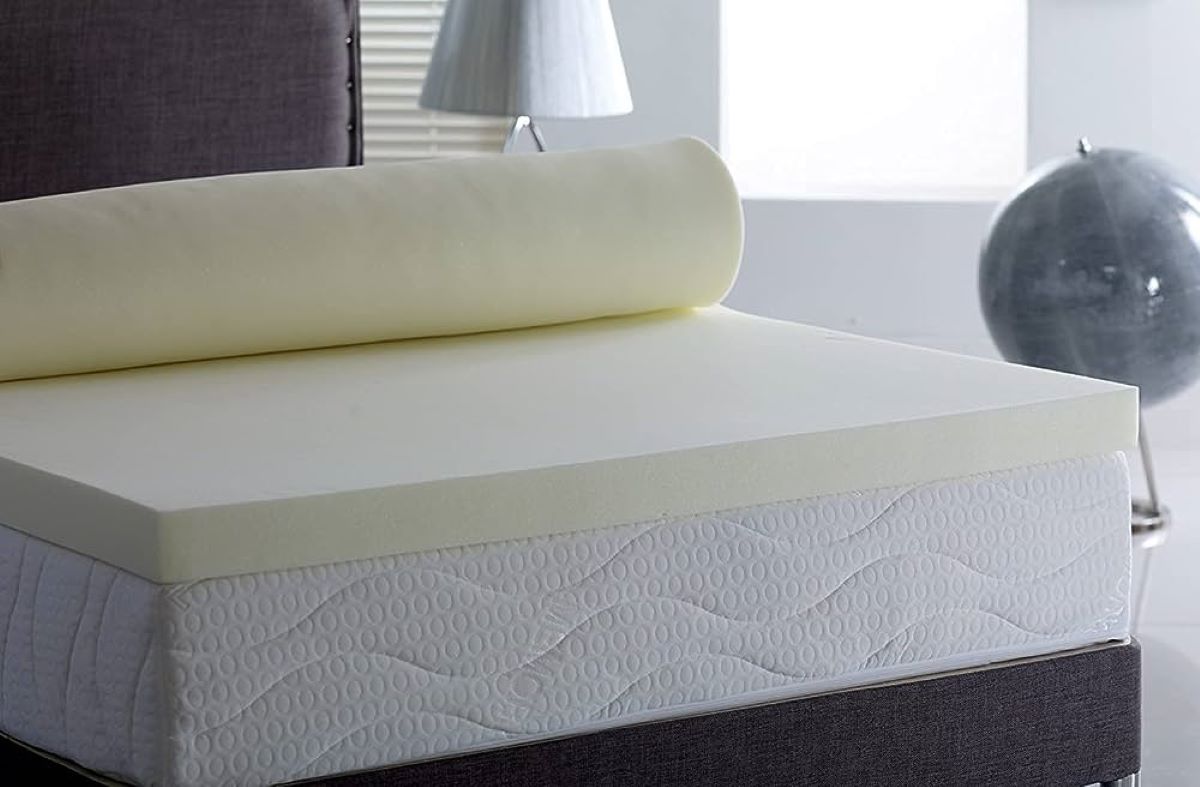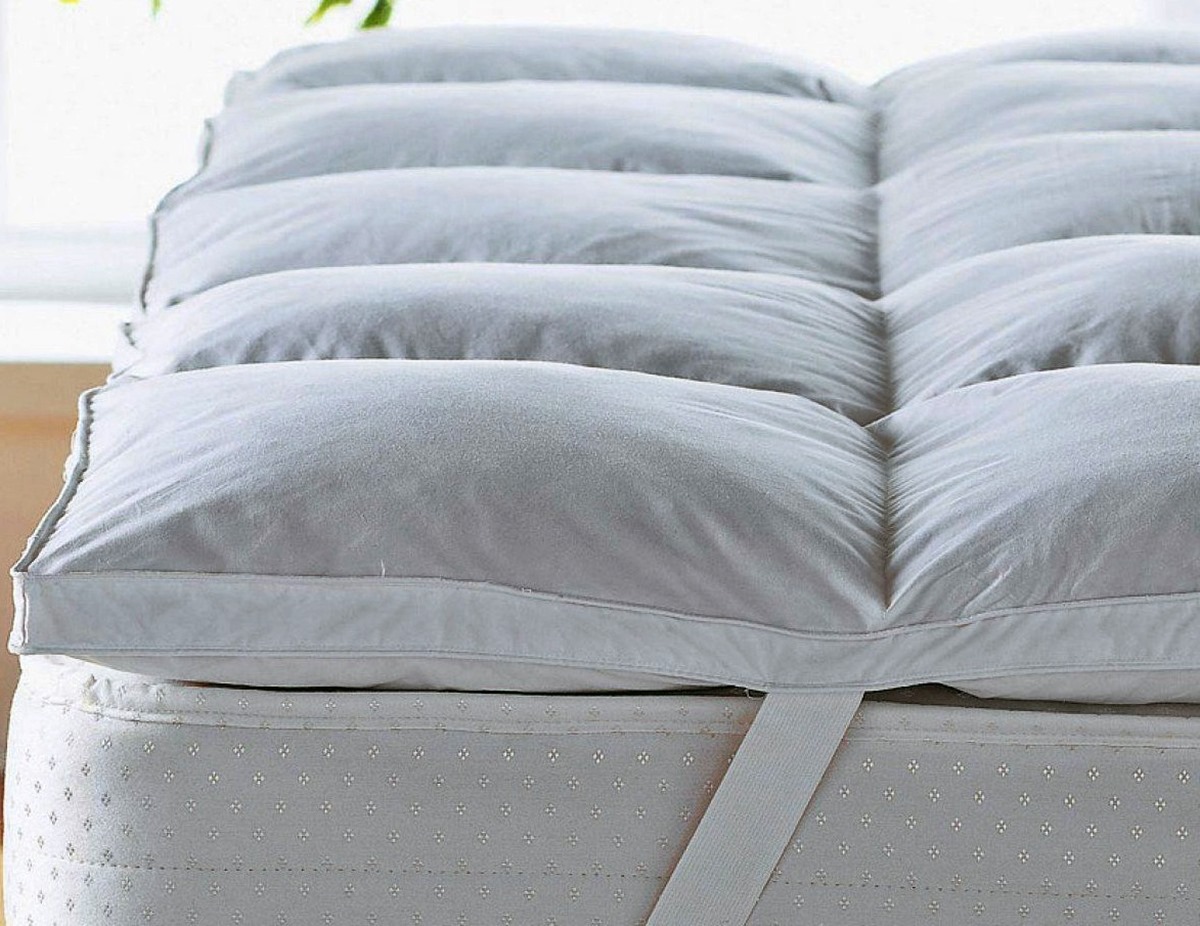Home>Furniture>Bedroom Furniture>Which Side Of A Mattress Topper Goes Up
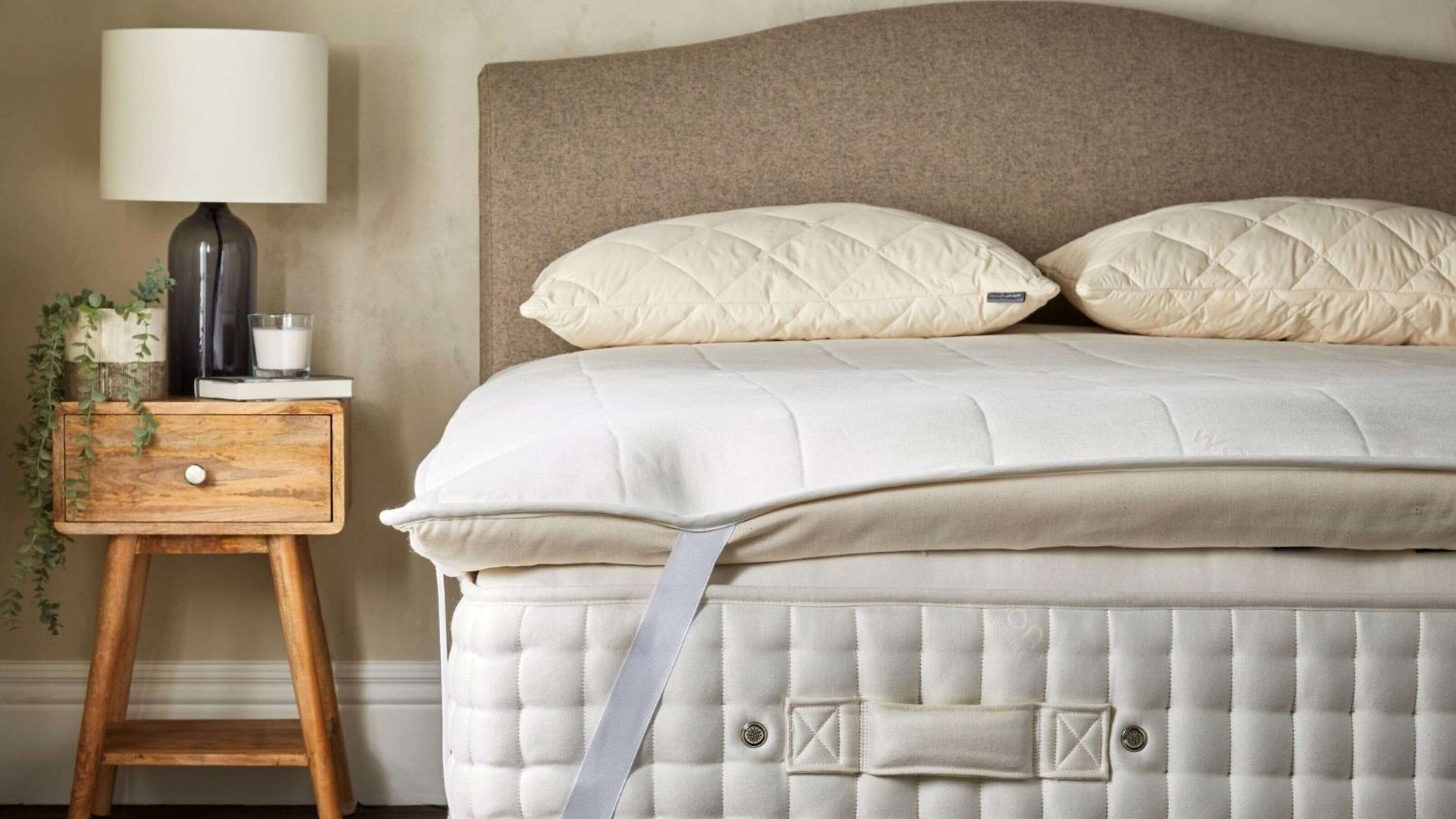

Bedroom Furniture
Which Side Of A Mattress Topper Goes Up
Modified: September 1, 2024
Need help figuring out which side of a mattress topper goes up? Our guide will help you make the right choice for your bedroom furniture.
(Many of the links in this article redirect to a specific reviewed product. Your purchase of these products through affiliate links helps to generate commission for Storables.com, at no extra cost. Learn more)
Introduction
A mattress topper is a great addition to any bed, offering extra comfort and support. However, when it comes to using a mattress topper, many people are unsure which side should face up. It may seem like a simple question, but getting it wrong could impact the effectiveness and longevity of your topper.
In this article, we will explore the benefits of using a mattress topper, and more importantly, answer the question of which side of a mattress topper should face up. By understanding the different layers of a mattress topper and considering a few key factors, you will be able to confidently determine the correct orientation of your topper for optimal comfort and durability.
Key Takeaways:
- Ensure optimal comfort and longevity of your mattress topper by placing the comfort layer side up, following manufacturer’s instructions, and considering factors like quilting, firmness, and personal preference.
- Identify the top side of your mattress topper using visible quilting, manufacturer’s label, bedding compatibility, and comfort feel, ensuring you enjoy the full benefits of enhanced comfort and support.
Read more: Which Side Of A Memory Foam Topper Goes Up
Benefits of Using a Mattress Topper
A mattress topper serves as an additional layer of padding that is placed on top of your existing mattress. It offers several benefits that can enhance your sleep experience and overall comfort.
- Added Comfort: One of the main reasons people use mattress toppers is to enhance the comfort level of their mattress. Toppers come in various materials, such as memory foam, latex, or down alternative, each offering a unique feel. These materials conform to your body, providing targeted support and relieving pressure points.
- Improved Support: If your mattress is starting to sag or lose its support, a mattress topper can help rejuvenate it. Toppers with firm materials like high-density foam or latex can provide extra support to your spine and joints, helping to alleviate aches and pains.
- Temperature Regulation: Many mattress toppers are designed with materials that provide better airflow and breathability. If you tend to sleep hot, choosing a topper with cooling properties can help regulate your body temperature throughout the night, promoting a more comfortable sleep environment.
- Extended Mattress Lifespan: By adding a mattress topper, you can protect your mattress from stains, spills, and general wear and tear. The topper acts as a barrier between you and the mattress, preventing any damage that could potentially reduce its lifespan.
- Easy Maintenance: Mattress toppers are generally easier to clean compared to a full mattress. Most toppers are machine washable or come with removable and washable covers, making maintenance a breeze.
- Personalization: With a mattress topper, you can adjust the feel of your mattress according to your preference. If you want a softer or more supportive surface, simply choose a topper that aligns with your desired comfort level.
Whether you’re looking to enhance the comfort of your mattress, rejuvenate its support, regulate your body temperature, or protect it from damage, a mattress topper can provide a range of benefits to improve your sleep experience.
Understanding Mattress Topper Layers
Before we delve into the question of which side of a mattress topper goes up, it is important to understand the different layers that make up a typical mattress topper. This knowledge will help you make an informed decision about the correct orientation of your topper.
A mattress topper typically consists of multiple layers, each serving a specific purpose. The most common types of layers found in mattress toppers include:
- Cover: The cover is the outermost layer of the topper, and it acts as a protective barrier. It is usually made of a soft and breathable fabric, such as cotton or polyester. Some covers may also have additional features like moisture-wicking properties or hypoallergenic materials.
- Comfort Layer: The comfort layer is the main component that determines the feel and comfort of the topper. It is typically made of materials like memory foam, latex, or down alternative. This layer provides cushioning and conforms to your body shape, relieving pressure points and enhancing overall comfort.
- Support Layer: The support layer, also known as the base layer, provides stability and support to the topper. It is usually made of high-density foam or latex materials that offer firmness and durability. This layer ensures proper spinal alignment and prevents the topper from sagging.
- Transition Layer (Optional): Some mattress toppers may have an additional transition layer between the comfort and support layers. This layer helps to provide a seamless transition between the softness of the comfort layer and the firmness of the support layer, enhancing the overall feel of the topper.
Understanding the different layers of a mattress topper is essential in determining which side should face up. The comfort layer, with its plush and contouring properties, is typically the side that should be facing up, as it is designed to provide the most direct contact with your body.
However, it’s important to note that not all mattress toppers have visibly distinguishable layers. Some toppers may have a one-piece construction without distinct layers. In such cases, it is generally safe to assume that the side with the more quilted or textured appearance should face up for optimal comfort and performance.
Now that we have a basic understanding of mattress topper layers, let’s explore how to determine which side of a mattress topper goes up based on various factors.
Determining Which Side of a Mattress Topper Goes Up
While the general rule is to place the comfort layer side up, there are a few factors to consider when determining which side of a mattress topper should face up:
- Manufacturer’s Instructions: The first step in determining the correct orientation of your mattress topper is to consult the manufacturer’s instructions. Some mattress topper manufacturers provide specific guidelines on how to properly place the topper on your mattress. Follow their recommendations for the best results.
- Tag or Label: Check if your mattress topper has a tag or label that indicates which side should face up. Manufacturers often include such labels to guide users in properly placing the topper. Follow the instructions provided on the tag to ensure the topper is correctly oriented.
- Quilting or Texture: Examine the surface of the mattress topper for any noticeable quilting or texture. In most cases, the side with more visible quilting or texture should face up. This side is typically designed to provide better airflow, heat dissipation, or grip to prevent the topper from sliding on the mattress.
- Elastic Straps or Skirt: If your mattress topper has elastic straps or a skirt to secure it to the mattress, those features should be placed on the underside. The side with the straps or skirt is meant to grip the mattress, ensuring that the topper stays in place throughout the night.
- Firmness Level: Consider the firmness level of your mattress topper. If one side feels softer or more plush compared to the other, it is likely that the softer side should face up for maximum comfort.
- Personal Preference: Ultimately, your personal preference plays a role in determining which side of the mattress topper goes up. If you have used the topper for a while and find that one side offers better comfort or support, you can choose to have that side facing up.
By taking these factors into account, you can confidently determine the correct orientation for your mattress topper, ensuring that you enjoy the full benefits and comfort it has to offer.
The softer, cushioned side of a mattress topper should go up, providing extra comfort and support for a better night’s sleep.
Factors to Consider
When deciding which side of a mattress topper should face up, there are a few important factors to consider. These factors can help you make an informed decision and ensure optimal comfort and performance:
- Material: Different mattress toppers are made from various materials, each with its own characteristics. Consider the properties of the material used in your topper, such as memory foam, latex, or down alternative, and determine which side will provide the desired comfort and support based on the material’s specific attributes.
- Firmness: Some mattress toppers have different firmness levels on each side. If this is the case, consider your personal preference for the desired level of softness or firmness and choose the appropriate side accordingly.
- Body Temperature: If you tend to sleep hot or cold, consider the temperature-regulating properties of your mattress topper. Certain materials or technologies are designed to help regulate body temperature, so placing the appropriate side up can contribute to a more comfortable sleep environment.
- Sleeping Position and Support: Take into account your preferred sleeping position and the support you need. For example, if you are a side sleeper and require additional pressure relief for your shoulders and hips, you may want to place the side with enhanced contouring properties facing up.
- Thickness: Some mattress toppers have varying thickness levels on different sides. The thickness can affect the overall feel and support of the topper. Consider your comfort preferences and any specific needs for support when determining which side should face up.
- Manufacturer Recommendations: Always refer to the manufacturer’s instructions or recommendations when in doubt. They may provide specific guidance on how to properly orient your mattress topper for optimal performance and longevity.
By considering these factors, you can make an informed decision about the orientation of your mattress topper, ensuring that you get the most out of its comfort and support.
Read more: Which Side Of The Mattress Pad Goes Up
How to Identify the Top Side of a Mattress Topper
Identifying the top side of a mattress topper is essential for proper placement and optimal comfort. While the general rule is to have the comfort layer facing up, here are some tips to help you identify the top side of your mattress topper:
- Manufacturer’s Label: Check if your mattress topper has a manufacturer’s label or tag. The label may indicate which side should face up. Follow the instructions provided to ensure correct orientation.
- Visible Quilting or Design: Examine the surface of the mattress topper for any visible quilting, design patterns, or texture. In most cases, the side with more pronounced quilting or design is intended to be the top side. This side is often designed to provide better airflow, heat dissipation, or grip to prevent the topper from sliding.
- Marks or Indicators: Some mattress toppers have small marks or indicators to denote the top side. These markings may be subtle, such as embroidered logos or small tags. Pay attention to any distinguishing features that may indicate which side should face up.
- Bedding Compatibility: Consider how the mattress topper aligns with your bedding. If you have fitted sheets or mattress protectors, check if they fit more snugly on one side compared to the other. The side that allows for a better fit with your bedding is likely the top side.
- Comfort and Feel: Test the feel of the mattress topper by lying on both sides. Pay attention to the level of comfort, support, and contouring provided by each side. Typically, the top side should offer a softer and more cushioning feel, conforming to your body shape.
- Elastic Straps or Skirt: If your mattress topper has elastic straps or a skirt to secure it to the mattress, those features should be placed on the underside. Therefore, the side without the straps or skirt is usually the top side. The side with the straps or skirt is designed to grip the mattress and prevent the topper from shifting.
It’s important to note that not all mattress toppers have distinguishable top and bottom sides. In such cases, follow the general guidelines of placing the comfort layer side up for optimal comfort and support.
If you’re still unsure about which side of your mattress topper goes up, refer to the manufacturer’s instructions or reach out to their customer support for clarification. They can provide specific guidance based on the construction and design of the mattress topper.
By following these tips, you can easily identify the top side of your mattress topper and ensure that it is correctly oriented to provide the best sleep experience possible.
Conclusion
A mattress topper is a valuable addition to your bed, offering enhanced comfort, support, and durability. When it comes to determining which side of a mattress topper goes up, it’s important to consider factors such as manufacturer recommendations, visible quilting or texture, markings, bedding compatibility, comfort and feel, and the presence of elastic straps or skirts.
By carefully assessing these factors and following the guidelines mentioned in this article, you can confidently identify the top side of your mattress topper. Placing the correct side up ensures that you can enjoy the full benefits of the topper, including improved comfort, pressure relief, temperature regulation, and prolonged mattress lifespan.
Remember to refer to the manufacturer’s instructions for any specific guidelines they provide, as they have the most knowledge about their particular mattress topper model. Following their guidance will help maintain the integrity and performance of your topper.
Ultimately, the goal is to create a comfortable and personalized sleep environment. The correct orientation of your mattress topper is an essential aspect of achieving this. If you have any doubts or questions, don’t hesitate to seek assistance from the manufacturer or a sleep specialist who can provide further guidance.
Now that you have a clear understanding of how to determine which side of a mattress topper goes up, you can confidently enjoy a restful and comfortable night’s sleep on your perfectly oriented topper.
Frequently Asked Questions about Which Side Of A Mattress Topper Goes Up
Was this page helpful?
At Storables.com, we guarantee accurate and reliable information. Our content, validated by Expert Board Contributors, is crafted following stringent Editorial Policies. We're committed to providing you with well-researched, expert-backed insights for all your informational needs.
